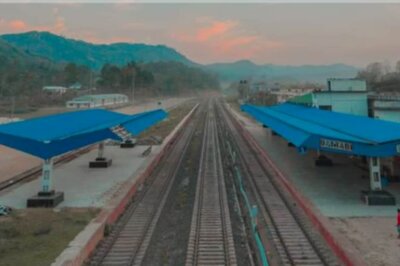
views
The union cabinet chaired by Prime Minister Narendra Modi has cleared three proposals for semiconductor plants, in a significant move aimed at bolstering India’s chipmaking capabilities. The decision, announced on Thursday, entails the establishment of two semiconductor plants in Gujarat and one in Assam, with an estimated investment of Rs 1.26 lakh crore.
The centrepiece of this initiative is the creation of India’s inaugural commercial semiconductor fabrication unit, a joint venture between Tata Electronics Private Limited and Taiwan’s Powerchip Semiconductor Manufacturing Corp (PSMC), set to be situated in Gujarat’s Dholera.
Speaking on this groundbreaking development, union minister of electronics and information technology Ashwini Vaishnaw stated that the fab in Dholera is slated to be constructed at a projected cost of Rs 91,000 crore and will mark a milestone in India’s semiconductor landscape.
The facility, boasting a capacity of 50,000 wafers per month, is poised to become a vital contributor to the domestic semiconductor supply chain.
Vaishnaw underscored the significance of the Prime Minister’s decision, highlighting the transformative impact of establishing India’s first commercial semiconductor fab. He emphasised that the collaboration between Tata and Taiwan’s Powerchip signifies a pivotal moment for the country.
Additionally, the cabinet’s approval extends to a semiconductor ATMP unit by Tata Semiconductor Assembly and Test Pvt Ltd (TSAT) in Assam’s Morigaon, with a significant investment of Rs 27,000 crore. This move is poised to bolster semiconductor infrastructure in the northeastern region of India, contributing to regional economic development and technological advancement, officials said.
The cabinet has also sanctioned the establishment of another semiconductor plant in Gujarat’s Sanand, spearheaded by CG Power and Japanese semiconductor manufacturer and market leader in microcontrollers, analogue, power, and SoC devices, Renesas. This venture, set to materialise at an estimated cost of Rs 7,600 crore, is projected to yield 15 million chips per day, further fortifying India’s semiconductor manufacturing capabilities.
This is the second semiconductor facility set to open in Sanand. Last year, US chipmaker Micron revealed intentions to develop a new manufacturing and testing plant in Gujarat. And, as promised, the company has set the groundwork for its Rs $2.75-billion facility in Sanand.
India Electronics and Semiconductor Association (IESA) chairperson Sanjay Gupta and president Ashok Chandak applauded the cabinet’s move. In a statement, they said: “The decision signifies a watershed moment for India’s semiconductor industry. With construction set to commence within the next 100 days, this initiative underscores India’s commitment to fostering a robust semiconductor manufacturing ecosystem. We are especially proud to note that Tata Electronics and Renesas Electronics, both esteemed members of the India Electronics and Semiconductor Association (IESA), are pivotal players in this endeavor. Their involvement not only demonstrates their dedication to India’s technological advancement but also highlights the pivotal role of IESA in driving industry growth and innovation.”
This latest development underscores the Indian government’s commitment to fostering indigenous semiconductor production and reducing dependence on imports, officials said. With these strategic investments, India aims to position itself as a key player in the global semiconductor market, fueling innovation, economic growth, and technological self-reliance.
“The union cabinet’s approval on the establishment of three semiconductor units under the India Semiconductor Mission is a positive and commendable development. This is a progressive step for India and the strongly emerging manufacturing ecosystem in the country. We believe this serves as an excellent example for our nation towards attaining self-sufficiency in line with our Hon’ble Prime Minister’s vision of ‘Atmanirbharta’ and will further inspire India’s goals to become a global manufacturing and supply chain hub. Moreover, with the output from these facilities being poised to benefit various sectors and segments, it is expected to provide a fillip to the ‘Digital India’ mission through increased technological prowess and advancement of the indigenous industrial ecosystem, besides generating employment and attracting more investments in the country,” said Lt Gen Dr SP Kochhar, director general of Cellular Operators Association of India (COAI), in a statement.


















Comments
0 comment